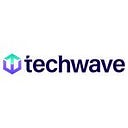Software 2.0 and the Future of Programming: What to Expect
Introduction
In the ever-evolving landscape of technology, the software industry has witnessed a remarkable transformation in recent years. A new era of programming, known as Software 2.0, is emerging, bringing with it revolutionary changes to the way we develop and interact with software applications. In this blog, we will delve into the world of Software 2.0 and explore the exciting possibilities it holds for the future of programming.
What is Software 2.0?
Software 2.0 is a paradigm shift in programming that leverages machine learning and artificial intelligence to enhance the traditional coding methods of Software 1.0. In Software 1.0, developers handcraft explicit instructions and rules for a computer to follow. However, Software 2.0 introduces a more data-driven approach, where algorithms learn patterns and make predictions based on vast amounts of data.
The Rise of Machine Learning
At the heart of Software 2.0 lies machine learning, a subset of artificial intelligence that empowers algorithms to learn from data without explicit programming. This revolutionary technology has the capability to improve software development in numerous ways, from automating repetitive tasks to solving complex problems with unprecedented efficiency.
Implications for the Future of Programming
1. Automation and Efficiency: Software 2.0 significantly streamlines the development process. Machine learning models can automatically generate code for specific tasks, reducing the need for manual coding. This automation leads to faster development cycles and increased productivity for developers.
2. Enhanced User Experience: With the ability to analyze vast datasets, Software 2.0 can create highly personalized user experiences. Applications can adapt to individual preferences, providing users with more relevant and tailored content.
3. Improved Predictive Capabilities: Software 2.0 excels at making predictions based on patterns within data. This opens doors to predictive analytics, forecasting, and preemptive issue resolution, benefitting a wide range of industries.
4. Real-time Adaptation: As machine learning models continuously learn and evolve, software applications can adapt in real time to changing user behaviors and market trends. This adaptability enhances the overall user experience and keeps applications relevant in dynamic environments.
5. Data-Driven Decision Making: With Software 2.0, businesses can leverage data to make more informed decisions. Machine learning models can analyze complex data sets, providing valuable insights that drive strategic planning and innovation.
Challenges and Considerations
While Software 2.0 offers remarkable advancements, it comes with its own set of challenges. Data privacy and security become paramount concerns when dealing with vast amounts of sensitive information. Additionally, the lack of interpretability in some machine learning models can raise questions about transparency and accountability.
Conclusion
Software 2.0 is revolutionizing the programming landscape, unlocking unprecedented possibilities for developers and businesses alike. With the power of machine learning and artificial intelligence, the future of programming is set to be more automated, adaptive, and data-driven. Embracing Software 2.0 will empower developers to build innovative applications that provide personalized and enhanced user experiences, driving digital transformation across industries.
As technology continues to evolve, it is crucial for businesses and developers to stay at the forefront of these developments and explore the full potential of Software 2.0 in shaping the future of programming.
